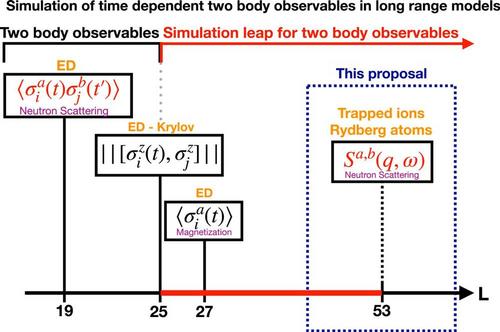Dynamical structure factors of quantum simulators
State-of-the-art exact numerical algorithms to time evolve two-body observables for the long-range TFIM.
Image Credit: Maria Laura Baez, Marcel Goihl, Jonas Haferkamp, Juani Bermejo-Vega, Marek Gluza, and Jens Eisert
Physicists from Freie Universität Berlin and Helmholtz Zentrum Berlin (HZB) has shown a way to simulate the quantum physical properties of complex solid state systems - a method that can be studied experimentally. The research team led by Professor Jens Eisert demonstrated that the measurements of dynamic structure factors in quantum simulators provides a useful tool to assess time-dependent quantities of key importance in condensed-matter physics and further place quantum simulators into the realm of quantum technological devices.
News from Nov 02, 2020
The research results were published in the renowned journal Proceedings of the National Academy of Sciences of the United States of America (PNAS) .
The joint research group of Freie Universität Berlin and Helmholtz Zentrum Berlin (HZB) investigates how highly complex properties emerge out of simple interactions in quantum materials – and how they can be modelled. The researchers want to delve deeper into questions of realistic quantum computers and quantum simulators. They strive to make the development of a robust quantum computer possible - a computer that generates stable results even when errors occur and corrects these errors.
Keywords
- complex quantum systems
- dynamic structure factor
- Jens Eisert
- PNAS
- quantum computing
- quantum modelling
- quantum simulations
